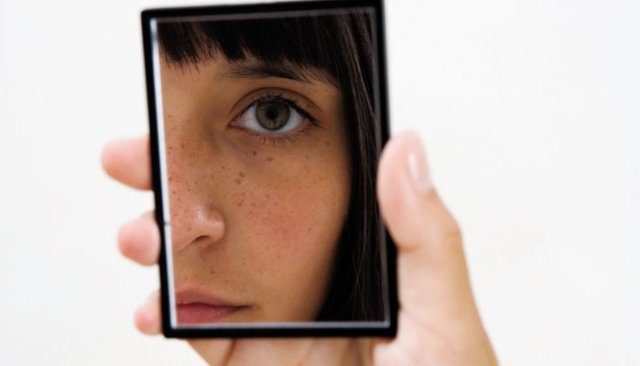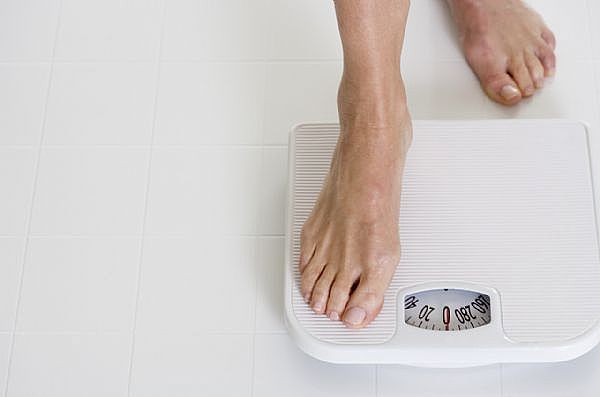Foods 2030 Lessons
Your Lessons
Body image
BODY IMAGE
Your mental picture of yourself is your body image. It is related to your feelings and attitude about your physical appearance and your perception of how others see you. How you see yourself is directly related to your self esteem and therefore motivation and success.
You are bombarded daily with information about your physical appearance: from friends, relatives, parents, teachers, magazines, TV and newspapers. Sorting out what is the truth is an important step in developing and keeping a positive body image. Fashion magazines, newspapers, television and Hollywood bombard us with images that tell us that women should be thin and men should be muscular. These idols are portrayed as being beautiful, successful, in control and accepted. The result of this promotion is an increasing desire to be too thin especially among adolescent females.
For females, the search for low calorie, low fat diet foods becomes a major consideration in selecting food. For those into body building and shaping, foods and supplements advertised to increase muscle mass are pursued. The powerful desire to shape your body can result in physically and psychologically debilitating eating disorders such as anorexia (fasting and reduced food consumption) and bulimia (overeating followed by depression, then vomiting and/or excessive exercise and/or laxative abuse).
Some recent statistics:
- 30-60% of adolescents are dissatisfied with their weight or body shape
- 60% of Canadian children do not meet average cardiovascular fitness standards
- 7-17 year olds are the heaviest users of diet pills in the United States
- Half of normal weight girls are dieting because they think they are overweight
- 7% of high school males and 3% of females take steroids to increase their muscle mass
- 40% of males aged 12-22 are dissatisfied with their weight.
There is no “ideal weight” for everyone of the same height and age because people have different body compositions. Instead there is a range of weights that are healthy for each height. Even these tables don’t take into consideration the differences in amount of muscle and fat in each individual’s body. Use the tables only as guidelines to assess your current weight. Remember there are dangers to being underweight as well as overfat. Healthy eating, regular physical activity and self acceptance are important factors in developing a positive body image.
BODY COMPOSITION
Your body is composed mainly of fat, muscle, water and minerals. Daily fluctuations in body weight occur mainly due to changes in the water content of your body. Over a period of a week, body weight usually remains constant unless there are major changes in your food consumption (energy intake) or physical activity (energy output).
Body composition is dependent on the following factors:
- Frame size - the weight and size of your bone structure.
- Gender - female bodies have proportionally more fat than male bodies.
- Age - during growth to adulthood, the total water composition of your body decreases and the fat composition increases. Even if the same weight is maintained throughout your adult like, active tissue is progressively replaced by fat tissue. In other words, even if our body weight does not change, we become increasingly fatter as we grow older.
Physical Activity - physical activity results in more muscle, lack of physical activity results in more fat.
Body weight is related to body composition:
- A larger frame holds more muscle tissue and therefore weighs more
- A sedentary person may be within his/her weight range, but overfat
- A person doing heavy physical work most hours of the day may be overweight according to the height/weight charts, but not fat.
- Active individuals have a greater muscle mass than do inactive people and may weight more because muscle tissue is heavier than fat tissue.
- Training athletes and weight lifters may contain very little fat tissue, but may be overweight when plotted on the height/weight charts.
- As your weight increases over time, you gain fat and/or muscle tissue depending on your physical activity, i.e. weight lifters and athletes gain weight mostly in the form of muscle; sedentary individuals gain fat tissue.
- As your weight decreases over time you lose fat and/or muscle tissue depending on your physical activity
We can change our body composition through physical activity. In general, increasing your physical activity increases the proportion of muscle to fat tissue you have in your body
Goals for achieving and maintaining healthy body composition.
The key to maintaining a healthy body composition is to consume a balanced diet, drink plenty of fluids and participate in daily activity.
UNDERWEIGHT
Extremes in underweight can shorten an individual’s life span. A person who is more than 10% below the normal weight is considered to be underweight. Twenty percent or more below normal weight is cause for concern because serious results may occur, especially in younger people.
Health Risks of being Underweight

- heart irregularities
- lowered resistance to infection
- nutrition deficiencies
- chronic fatigue
- anemia
- eating disorders
- diarrhea
- depression
- distorted body image
Some of the causes of underweight are:
- Disease
- Diminished food intake from psychological, anorexia or economic reasons
- Greatly increase activity
- Irregular and inadequate meals
Treatment
Provide a sufficiently high caloric intake to gain weight and establish good food habits. Unless good food habits are formed, a person will slip back into the former way of eating and the problem will repeat itself.
- Gradual increase in calories: Attractive, nutritionally adequate diet with snacks
- Moderate exercise to stimulate the appetite, maintain general health, and improve muscle tone.
- Moral support with short and long-term goals.
OVERFAT
Overfat is one of the most common medical problems today. Obesity is an abnormal condition due to excessive deposits of fat in the body. The cause of overfat in most cases is simply eating too much. Being overfat places an added burden on the heart, circulatory system, liver and gall bladder. It also increases the risk in surgery. Most overfat people have trouble with their feet. The bones of the feet were meant to carry only a certain amount of weight. Imagine carrying a 50 lb back pack around and how good it would feel to take it off at the end of the day.
Treatment
Change your lifestyle - Increase physical activity and provide a diet lower in calories, but nutritionally balanced to lose weight and establish good food habits. Unless good food habits are formed, a person will slip back into the former way of eating and the problem will repeat itself.
- Gradual decrease in calories: fewer servings, decrease in fat content and increase in fibre
- Increase in physical activity to further create a deficit in calories.
- Moral support with short and long-term goals.